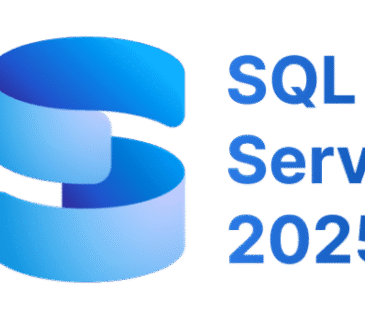How To Setup Failover Cluster for File Server High Availability on Windows Server 2025

Table of Contents
Introduction
High availability (HA) is critical for modern organizations that cannot afford downtime of shared resources such as file shares, departmental data, and application-level files. Windows Server 2025 introduces performance improvements, enhanced cluster resiliency, and better storage integration—making it an excellent platform for building a highly available File Server Failover Cluster.
In this guide, you will learn exactly how to set up a Windows Server 2025 failover cluster for file server high availability using shared storage—ideal for enterprises, SMBs, and IT labs.
What You Need (Prerequisites)
Before you begin, ensure the following:
1. Hardware / Virtual Machines
You need at least two cluster nodes:
- Node1 – Windows Server 2025 (Datacenter recommended)
- Node2 – Windows Server 2025
- Shared Storage via:
- iSCSI Target Server
- SAN Storage
- Storage Spaces Direct (S2D)
- Fibre Channel storage
Important: Each node must access the same shared LUN(s) with persistent reservation support.
2. Network Requirements
Recommended network design:
| Network | Purpose |
|---|---|
| Management | For RDP, admin communication |
| Cluster/Heartbeat | Internal cluster communication |
| Storage/iSCSI | Storage traffic (if using iSCSI) |
Network Best Practices
- Enable Jumbo Frames for iSCSI traffic.
- Keep storage traffic isolated (VLAN or separate switch).
- Enable NIC Teaming on management adapters (optional).
3. Active Directory Requirements
- All nodes must be joined to the same AD domain.
- You need a domain account with Domain Admin + Local Admin permissions.
4. Shared Storage Requirements
You need at least one shared disk:
- 1 x Quorum Witness Disk (optional if using Cloud Witness / File Share Witness)
- 1 or more x Data Disk(s) for File Server
5. Install Failover Clustering Feature on Each Node
Open PowerShell as Administrator:
Install-WindowsFeature -Name Failover-Clustering -IncludeManagementTools
Reboot the servers after installation.
Step-By-Step: Setup Failover Cluster for File Server HA
Step 1 — Validate Configuration
Windows Server 2025 requires cluster validation before creating the cluster.
Run the following on Node1:
- Open Failover Cluster Manager
- Click Validate Configuration
- Add both servers:
NODE1.domain.localNODE2.domain.local
- Choose Run all tests
- Complete the validation wizard.
If all tests pass → continue.
If warnings appear → review and fix (most warnings can be ignored, errors cannot).
Step 2 — Create the Failover Cluster
From Node1:
- Open Failover Cluster Manager.
- Click Create Cluster.
- Add both nodes.
- Specify the Cluster Name:
- Example: FS-CLUSTER
- Assign a Cluster IP Address:
- Example: 10.0.10.50
- Finish the wizard.
Cluster will now form and come online.
Step 3 — Configure Quorum (Highly Recommended)
Go to:
Failover Cluster Manager → Cluster Name → More Actions → Configure Cluster Quorum
Recommended Quorum Options:
- Cloud Witness (Azure Storage) → best for DR
- File Share Witness → for on-prem clusters
- Disk Witness → traditional method
For typical file server clusters, select File Share Witness.
Example PowerShell:
Set-ClusterQuorum -FileShareWitness \\DC01\QuorumWitness
Step 4 — Add Shared Storage to Cluster
- Go to Storage → Disks in Failover Cluster Manager.
- Click Add Disk.
- Select the shared LUN(s).
- Assign:
- Disk1 → Cluster Shared Volume / Data
- Disk2 → Witness (if you choose Disk Witness)
Convert Disk to Cluster Shared Volume (CSV)
Right-click the disk → Add to Cluster Shared Volumes
CSV paths look like:
C:\ClusterStorage\Volume1
Step 5 — Create a High Availability File Server Role
Now we configure the File Server as a cluster role.
- In Failover Cluster Manager:
- Right-click Roles → Configure Role
- Select File Server
- Choose File Server for General Use
- (If you host SMB shares, select this)
- Provide the File Server Name:
- Example: FS-SHARE01
- Assign a unique IP address:
- Example: 10.0.10.60
- Select the storage disk (CSV)
- Finish the wizard.
The File Server role is now online.
Step 6 — Create Highly Available File Shares
Now create shares that automatically move between nodes during failover.
To create a share:
- Go to Roles → FS-SHARE01
- Right-click → Add File Share
- Choose:
- SMB Share / Quick
- SMB Share / Advanced (recommended for production)
- SMB Share with Continuous Availability (for application workloads)
- Select CSV volume
- Enter share name:
- Example:
DepartmentData
- Example:
- Configure permissions:
- Department groups
- Administrators
- Backup Operators
- Enable:
- Continuous Availability (if required)
- Access-based enumeration
Finish the wizard.
Step 7 — Test Failover
To test high availability:
- In Failover Cluster Manager
- Select Roles
- Right-click the file server role (FS-SHARE01)
- Click Move → Select Node
- Choose Node2
Observe:
- Clients still access the share without interruption
- File Server role comes online on Node2
- No data loss
Failover Testing Using PowerShell
Move-ClusterGroup -Name "FS-SHARE01" -Node NODE2
Monitoring the Cluster (Windows Server 2025)
Server 2025 provides enhanced monitoring:
Use the new Cluster Dashboard:
- Node health
- Storage I/O
- Failover events
- Witness status
- CSV performance metrics
You can open it from:
Server Manager → Tools → Failover Cluster Manager → Dashboard
Conclusion
Setting up a File Server Failover Cluster on Windows Server 2025 gives your organization true enterprise-grade high availability. With shared storage, properly configured networks, and cluster roles, your file services remain accessible even if one server goes offline.
This architecture ensures:
- Zero downtime during patching
- Seamless failover between nodes
- Better resiliency and improved user experience
- Design



![Windows Server 2025 LTSC [10.0.26100.7171] Version 24H2 4 Windows Server 2025 LTSC [10.0.26100.7171] Version 24H2](https://vmorecloud.com/wp-content/uploads/2025/12/Windows-Server-2025-365x330.jpg)

